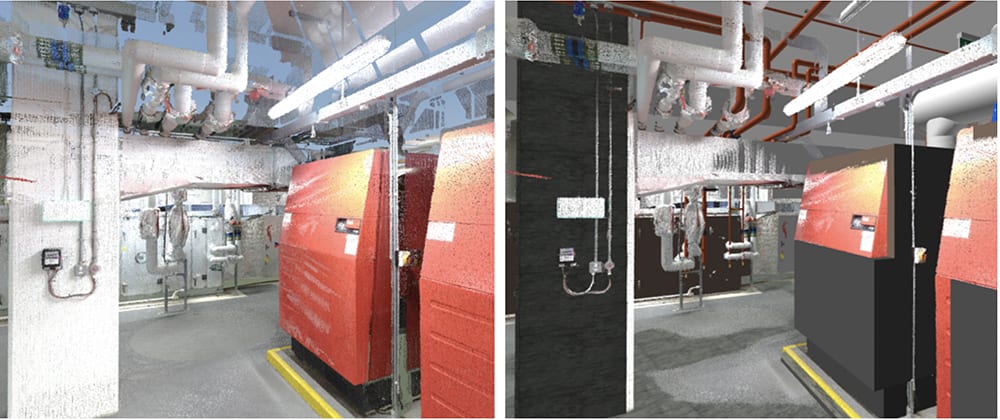How do you translate Revit data into a form that’s useful for the maintenance team? Mike Ford, digital/BIM manager at the University of West of England, offers some insights.
The University of the West of England (UWE) is on course to have digitised 90% of its 70 ha estate by the summer of 2020. UWE firmly advocates using the BIM process for the management of all aspects of its buildings, from asset data to health and safety, as BIM+ has written about previously.
The information from the 3D models can form a kind of building operating system – far better than searching out building information in a Windows file system, a user can navigate a virtual building to find the information they are looking for.
Not only is this information critically important for managing the facilities but it can be used by the university for a whole range of academic purposes, including teaching and research. These have been popular tools for courses such as the BIM Masters, allowing the university’s buildings to act as a living lab.
The challenge since the beginning has been finding a method for getting technical graphical information with critically important embedded asset data out of the hands of skilled Revit users and into the hands of people in the field doing the construction and maintenance work. Real-time issue tracking tool Revizto has offered a very effective solution.
UWE’s estates department is involved with projects ranging from multi-million pound new-builds right the way down to changing a toilet seat. The department has its own in-house design professionals, as well as making use of external designers, contractors and also has a term contractor responsible for building maintenance. Using Revizto UWE has been able to establish one common environment which fits each of its use cases.

The image on the left shows the point cloud and the one on the right has the point cloud overlaid on the model. You can clearly see issues with the pipe coordination at high level
The key to Revizto has been the simplicity, as many BIM managers will attest our problems are not technological, they are mostly human behavioural. The most important thing for software to achieve is to get users using it without becoming apathetic about change. With one simple page of instructions, we’re able to get most users up and running – we can introduce a second page if there is something specific they need to do with the software, commenting on a design, for example.
The possibilities this software has enabled, combined with innovations like tablet computing, is immense. 18 years ago, Apple released the first iPod which allowed users to carry 1,000 songs with them. Roll on to the current day and we can now hold every piece of building information for our entire estate with us! For designers, we can effortlessly flick between existing and proposed information, including various design options while standing in-situ.
For contractors, they can view all the 2D drawing sheets, check dimensions in 3D and look at designer’s comments while on site.
For our maintenance team, they have access to asbestos data, risk information, all the asset data on every piece of equipment, they can remove the ground before they dig a hole and check for services, they can understand what spare parts and access equipment they should take to site for a particular job, or hyperlink to an O&M manual.
This of course comes with its own challenges. It’s no small effort to compile such a huge dataset and keeping on top of change is also no small feat. However, by keeping all the information in one single location we stand the best chance we’ve ever had to maintain our building information.
Rhys Lewis, director at Revizto, has been working with Mike Ford and the estates team at UWE for two years. He says: “Working with Mike and the team has been nothing but exciting. The innovative ways they’re using our platform to realise the true benefits of digital has been nothing short of impressive. We’re seeing them use Revizto for: design comment and coordination, clash resolution, CDM walkthroughs, snagging and defects, and more.
“Our new direct point cloud support is also allowing the estates team to verify construction of their faculties by overlaying the scan data directly on the model to validate.
“Our development team work closely with Mike and our other clients to ensure Revizto continues to deliver best-in-class technology. Our development roadmap is focused on customer demand and we strive to continue to bring innovation to construction.”
Image: ProductionPerig/Dreamstime.com















